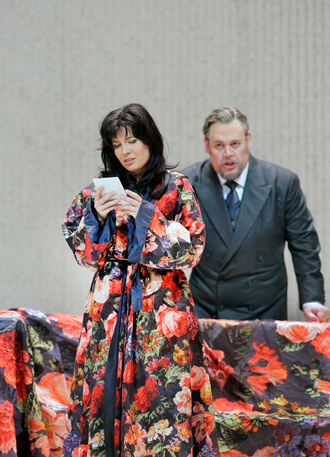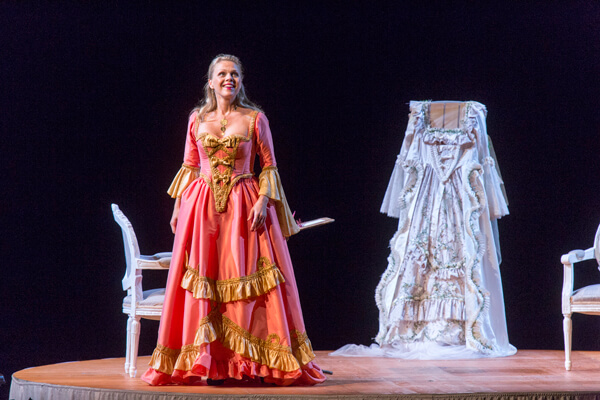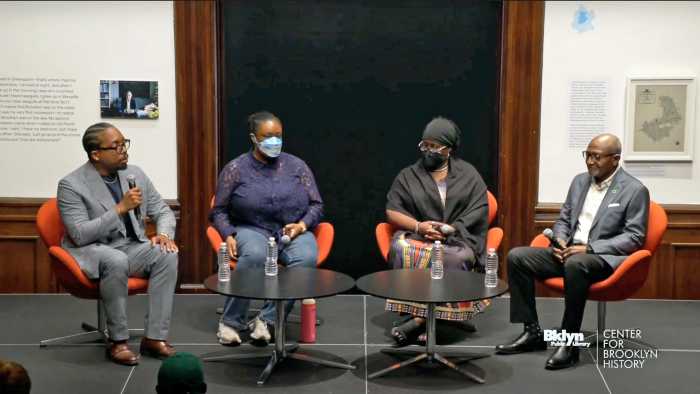BY ELI JACOBSON | Dame Ethel Smyth (1858-1944) a feminist, suffragette, openly bisexual composer with prominent lesbian affairs, was a woman with a mission. The trailblazing English composer was determined to leave the world a different, better place through her own untiring public work: “I feel I must fight for [my music], because I want women to turn their minds to big and difficult jobs; not just to go on hugging the shore, afraid to put out to sea.”
Despite open scorn from the male-dominated critical establishment, she composed an array of chamber, orchestral, and vocal works including six operas. One of them, the one-act “Der Wald” remains the only opera by a female composer to be performed at the Metropolitan Opera (Kaija Saariaho’s “L’Amour de loin” is likely to be the second, if reports are true). Her opera “The Wreckers,” with a libretto by her sometime lover Henry Brewster, was composed from 1902 to 1904 and premiered in Leipzig in 1906. Sir Thomas Beecham, a lifelong champion of the composer, conducted the English premiere in 1909 and 1910.
In September 2007, the ever-enterprising Leon Botstein programmed an American Symphony Orchestra concert performance of “The Wreckers” in English at Avery Fisher Hall, which marked its American premiere. This concert was widely hailed as a revelation. Botstein again presented “The Wreckers” in July in its first fully-staged US production, directed by frequent collaborator Thaddeus Strassberger as part of the Bard Summerscape 2015 Festival.
Bard presents first fully-staged US production of bisexual suffragette Ethel Smyth’s story of the sea
The Bard production revealed that the piece is extremely stageworthy and musically sound, if a bit overlong. Henry Brewster’s story, based on Cornish legend, concerns the intentional wrecking of ships by starving Cornish townspeople in order to seize the cargo by the law of salvage. They are led by their Pastor Pascoe, but the fisherman Mark, aided by Pascoe’s unhappy wife Thirza, secretly conspires to save the ships by lighting beacons along the coastline to guide them. Betrayed by the jealous Avis, the two renegade lovers are captured and are condemned by the angry townspeople to be chained to the rocks and drown in an underwater sea cave.
Smyth has a strong technical command of large musical structures, including expert synthesis of symphonic orchestration with vocal and choral composition. Her style is firmly tonal and late Romantic –– I heard distinct echoes of Wagner (Act II’s extended nocturnal love duet between the adulterous lovers echoes “Tristan”) and Debussy’s “La Mer” (the French composer was an admirer of Smyth’s works). Sir Edward Elgar’s orchestrated song cycle “Sea Pictures” also comes to mind (Elgar was the god of the conservative all-male musical old guard who were threatened by Smyth). Richard Strauss’ “Salome” was written at the same time as “The Wreckers,” and his even more dissonant “Elektra” premiered in 1909. By comparison, Smyth’s style sounds rather conventional and traditional.
The evocations of the sea and the central role of a socially ostracized fisherman persecuted by ignorant townspeople also evokes Benjamin Britten’s 1945 opera “Peter Grimes” which is considered the first great modern English opera. There was a staged revival of “The Wreckers” in England in 1939 but there is no indication that Britten saw it or was influenced by Smyth. In truth, “Grimes” has more memorable melody than “The Wreckers,” and the story has greater depth and ambiguity. The 20th century revival of English opera is credited to the gay composer Britten, but the bisexual feminist Smyth should also be credited as an important predecessor and trailblazer.
Strassberger did not succumb to the trendy revisionist tendencies of contemporary opera directors –– he told the story directly and honestly with no interventionist concept. Erhard Rom’s production design made excellent use of the vertical space of the Fisher Center’s Sosnoff Theater stage, using stacked crates to suggest high sea cliffs. Evocative lighting and video projections onto scrims and scenic units further created the illusion that the relatively small, shallow stage contained an epic view of Cornwall’s sea coast.
The singers were a strong committed crew with no weak links. Though hampered by an unflattering platinum blonde wig, Katharine Goeldner’s rich, solid mezzo-soprano and the deep conviction of her characterization created an imposing, sympathetic Thirza. The charismatic Louis Otey (in younger days maybe the most convincing Don Giovanni I have ever seen at New York City Opera) made Pascoe a disturbingly attractive antagonist. Despite announced indisposition, Otey’s slightly weathered baritone voice is still an imposing instrument with range, color, and power. English tenor Neal Cooper, despite some compression at the top of his range, brought a virile attractive stage presence, clear diction, real affinity for the genre, and a ringing spinto voice to the town rebel Mark. Australian soprano Sky Ingram as Avis revealed a temperament as fiery as her coppery ringlets (she was a dead ringer for Eleanor Tomlinson’s Demelza in the recent “Poldark” mini-series) and a rangy, tangy soprano with a firm top and bright steely core. Michael Mayes and Dennis Petersen contributed colorfully scruffy cameos as two of the more devious townspeople.
Botstein conducted the American Symphony Orchestra with a firm sense of the score’s musical structure and dramatic focus. Hopefully he and the orchestra will introduce us to Smyth’s “Der Wald” and some of her concert works in the future. More than 70 years after her death, Dame Ethel Smyth’s message should continue to be heard.



































